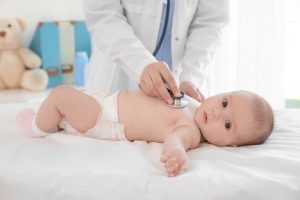
Researchers at the University of Galway have developed digital babies to better understand infant health during the critical first 180 days of life. The team created 360 advanced computer models that simulate each baby’s unique metabolic processes. The digital babies are the first gender-specific computer-based whole-body models that represent the metabolism of newborns and infants with 26 organs, six cell types, and more than 80,000 metabolic reactions.
Digital Babies Break New Ground
Real data from 10,000 newborns, including gender, birth weight, and metabolite concentrations, enabled the creation and validation of the models, which can be personalized—allowing scientists to study the metabolism of an individual infant for precision medicine applications. The work was carried out by a team of scientists from the Digital Metabolic Twin Centre at the University of Galway and the University of Heidelberg, led by Professor Ines Thiele, Principal Investigator at APC Microbiome Ireland. The team’s research aims to advance precision medicine using computer models. They describe the computer modeling of babies as groundbreaking because it improves our understanding of infant metabolism and creates opportunities to improve the diagnosis and treatment of conditions in the first days of a baby’s life, such as hereditary metabolic disorders.

Lead author Elaine Zaunseder from Heidelberg University explains: “Babies are not just small adults – they have unique metabolic characteristics that enable them to develop and grow healthily. For example, due to their high surface area to mass ratio, babies need more energy to regulate their body temperature, but in the first six months of life they are not yet able to shiver, so metabolic processes must ensure that the infant stays warm. Therefore, an essential part of this research was to identify these metabolic processes and translate them into mathematical concepts that can be applied in the computational model. We recorded metabolism on an organ-specific basis, which offers the unique opportunity to model organ-specific energy requirements, which vary greatly between infants and adults.”
Models Help Study the Metabolism of Healthy Infants and Those With Hereditary Metabolic Disorders
Since nutrition is the fuel for metabolism, researchers can use breast milk data from real newborns in their models to simulate the associated metabolism throughout the baby’s body, including various organs. Based on their diet, they have simulated the development of digital babies over six months and shown that they grow just as fast as real infants. Professor Ines Thiele, study leader of the project, said: “Newborn screening programs are crucial for the early detection of metabolic disorders, improving infant survival rates and health outcomes. However, the variability with which these diseases occur in babies highlights the urgent need for personalized approaches to disease management.”
Using their models, researchers can study the metabolism of healthy infants as well as those with hereditary metabolic disorders, including those screened for in newborn screening programs. When simulating the metabolism of infants with a disease, the models showed that they can predict known biomarkers for these diseases. In addition, the models accurately predicted metabolic responses to various treatment strategies, demonstrating their potential for clinical use. According to Elaine Zaunseder, this work is a first step toward creating digital metabolic twin models for infants that provide detailed insight into their metabolic processes. Such digital twins have the potential to revolutionize pediatric healthcare by enabling tailored treatment of each infant’s unique metabolic needs.


